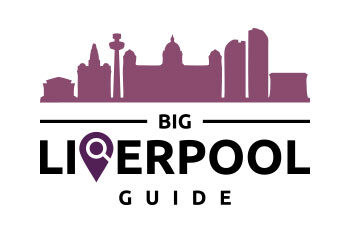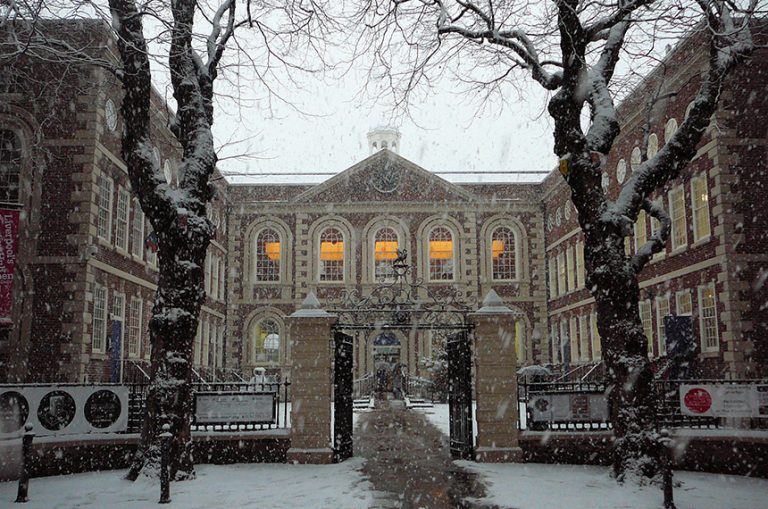19 Albert Dock Photos Through the Years

19 Albert Dock Photos Through the Years
The Albert Dock is the beating heart of Liverpool. It is this very location that has defined our community, culture and heritage. While the structure now serves as a beacon for food, drink and exhibitions, it was once so much more than that. To celebrate this historic complex of dock buildings and warehouses, which opened in 1846, here are 19 historic Albert Dock photos you need to see.
1875

source: streetsofliverpool.co.uk
The Albert Dock was the first British structure to be created from cast iron, brick and stone, featuring no structural wood. It was therefore the world’s first non-combustible warehouse system.
At the time of its opening, the Albert Dock was regarded as a ground-breaking docking system, as it allowed ships to be loaded and unloaded directly from and to the warehouses. As a result, it became a popular storage destination for valuable items, such as cotton, tea, brandy, silk, sugar, ivory and tobacco.
Unfortunately, the docking system was unable to effectively accommodate the replacement of sailing ships to steam-powered iron ships due to their tight entrances. Whilst the Albert Dock spread out as far as the Pier Head to accommodate the vessels, the storage began to diminish significantly by the 1860s.
1885
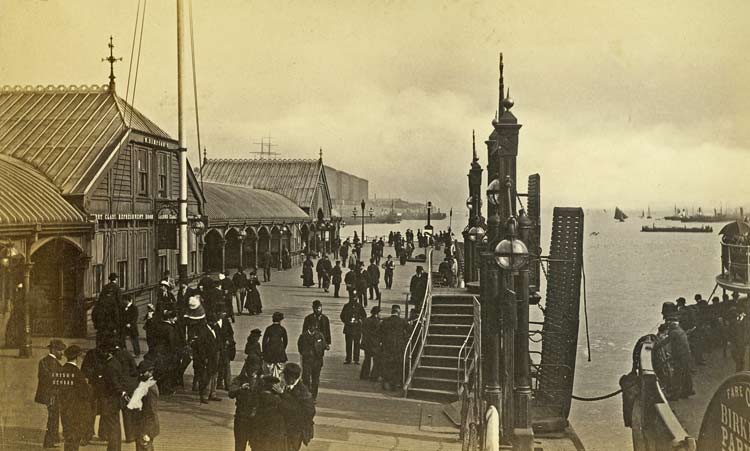
source: streetsofliverpool.co.uk
The above image shows a busy Albert Dock landing stage in 1885. This is one of the rare 19th century photographs of the Albert Dock. This is mostly likely because it was part of the Dock Estate, so was not open to the public. The 1975 and 1885 images are by Francis Firth & Co – the world’s first specialist photographic publisher.
1890
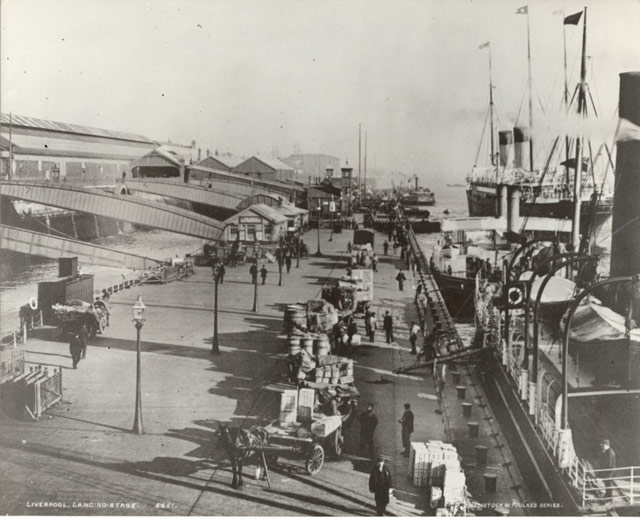
source: www.pinterest.com
The Albert Dock may have failed to have prepared for the rapid development of shipping technology, but it continued to run profitably. The photo above shows a busy landing stage at the Albert Dock, with horses transporting valuable goods to and from the port.
1910

source: www.gotoliverpool.co.uk
This photo was taken in the Albert Dock in 1910. Five years after this image was snapped, electric lighting was installed for the very first time throughout the dock. However, the technological feat was not enough to attract commercial activity to the complex of docks.

source: www.streetsofliverpool.co.uk
This photograph was taken in 1920 of Stanley Dock and the Tobacco Warehouse. It was in the 1920s that all commercial shipping activity ceased. Ships still docked at the port, but the complex of dock buildings mainly served as storage of goods transported by barge, rail or road. Due to the size of the warehouses, the Albert Dock remained profitable until the 1960s.
1920

source: https://www.thetrailblazer.co.uk
Liverpool’s landscape is changing ever day; however, there are some buildings that remain ever-present. It’s therefore interesting to look back at how the city appeared nearly one hundred years ago. This amazing photograph of the Albert Dock and the Canning Half Tide Dock was taken in 1920.
Mid 1930s
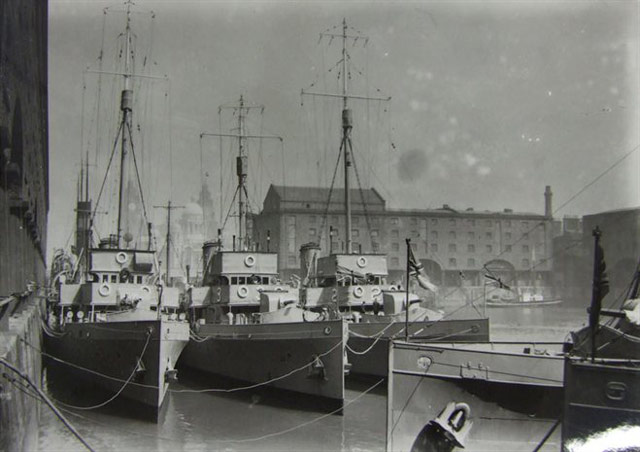
source: www.liverpoolmuseums.org.uk
Liverpool’s docks played an important role in the Battle of the Atlantic during World War II. The city became Great Britain’s main transatlantic convoy port, as it was a major naval base and HQ of the Admiralty’s Atlantic campaign. The above photograph was taken sometime in the mid-1930s, with a naval reserve squadron of sloops moored alongside the C block of warehouses, possibly before the start of the Second World War, which started in 1939.
Between 1939 to 1945, the Albert Dock was requisitioned by the Admiralty to provide a base for hundreds of ships, such as merchant ships, submarines, landing craft and small warships. It was the only time in history that so many ships berthed at the Albert Dock. Very aware of Liverpool’s key role in the campaign, the Luftwaffe targeted the city, resulting in the most bombing raids outside of London, and the Albert Dock losing 14% of its floor space.
1945

source: www.sharpesonline.com
The image above was taken in a seemingly quieter Albert Dock, most likely following the end of World War II. Two hard-working dockers chat on the dock that continued to play a role in the city of Liverpool until the 1960s. Many dock workers would often return home covered in sores and blisters after a hard day’s work, with heavy cargo posing a risk to their lives every day. Thousands of workers were also exposed to asbestos dust, which resulted in the progressive and disabling disease asbestosis.
1950

source: www.dailymail.co.uk
Liverpool’s most celebrated photographer, Edward Chambre Hardman, snapped a series of photographs of our magnificent city in the 1940s, as did his wife, Margaret. The above photo was taken as part of the photographer’s 1950s collection, showing a number of floating buoys, against the beautiful backdrop of the Albert Dock. Two years later, the Albert Dock was given Grade I listed building status.
1966

source: arttattler.com
As you can see in the 1966 image, the Albert Dock’s maritime industry had officially come to an end, and so the area was derelict for a number of years. All that is left is the standing monuments of the city’s shipping trade history.
1969

source: www.liverpoolpicturebook.com
Many people will recognise the Pumphouse – which now serves as a popular pub on the Albert Dock. However, the building wasn’t always a much-loved drink den, as it was originally built in 1878 as part of the Albert Dock’s extended hydraulic system. The above image was snapped back in 1969 – and the Albert Dock closed three years later in 1972, following the collapse of the Mersey Docks and Harbour Board and the scheme to demolish the dock.
1975

source: www.porterfolio.com
The Albert Dock fell into disuse in the 1970s, as shown in the 1975 snap above. As you can see in the photo, part of the Albert Dock failed to be restored from the damage of the Liverpool Blitz 1941. Once welcoming ships into the port every day, the docks are derelict, with not a sign of life to be seen. A year later, the Albert Dock was a conservation area.
1980
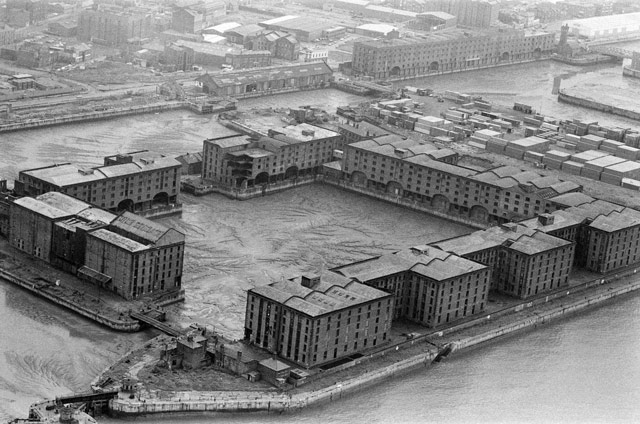
source: www.liverpoolecho.co.uk
Nowadays, the Albert Dock is viewed as the cultural hub of the city, with people of all ages paying a visit to enjoy a meal at a stylish restaurant, enjoy cocktails whilst admiring a beautiful view or taking an educational trip to one of the many museums on offer.
It may be hard for many people to believe that the Albert Dock had silted up by the 1980s, as the River Mersey has the second highest tidal range in England. While many people recognised the history and beautiful architecture of the buildings, the Albert Dock remained abandoned, with plans falling through to restore the dock to its former glory. The image offers an aerial view of the Albert Dock that was taken on 17th August 1980.
1983
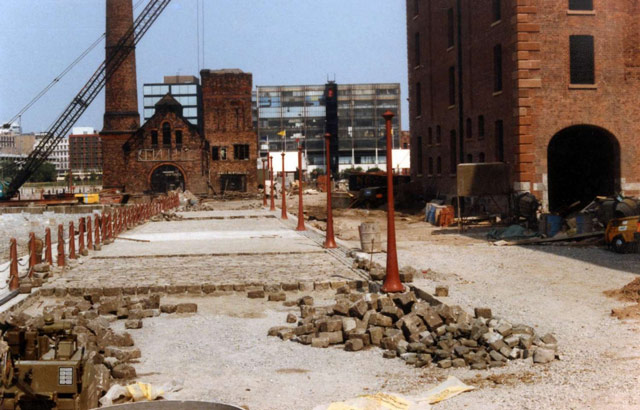
source: www.liverpoolecho.co.uk
The Albert Dock was given a new lease of life in 1983, due to the signing of an agreement between the newly-formed Albert Dock Company and the Merseyside Development Corporation. The 12 feet of silt and sand was dug out, allowing the water to be restored into the dock, and the first phase of the regenerated Albert Dock was opened in 1984, the final stage phase was finally opened to the public in 2003.
1988

source: www.liverpoolecho.co.uk
Following the successful regeneration of the Albert Dock, Prince Charles arrived in Liverpool to officially open the Albert Dock. His arrival also coincided with the opening of Tate Liverpool, which was the only Tate Gallery in the UK outside of London in the 1980s. The complex of dock buildings and warehouses soon became a major tourist attraction in the city, which included the Merseyside Maritime Museum and Granada Television.
1995

source: www.geograph.org.uk
In 1988, This Morning came to Liverpool, and was hosted by the husband and wife duo Richard and Judy. The morning television show began broadcasting inside the Albert Dock, with local weatherman Fred Talbot jumping around a floating map of the British Isles to report the week’s weather forecast. The show remained at the Albert Dock until 1996, when it was relocated to London.
2008

source: www.liverpoolecho.co.uk
You have to admit, the 2008 aerial view looks a great deal different to the 1980 one. The buildings, now beautifully restored, offer a variety of attractions for the public to enjoy. Following the city’s award of Capital of Culture 2008, it was announced the very same year that the Albert Dock would receive more bars and restaurants as part of its regeneration, with many people dropping in for a bite to eat and a drink at the Blue Bar & Grill, Spice Lounge, Circo, Panam Bar & Restaurant and What’s Cooking?
2013

source: https://www.flickr.com/photos/keithjones84
Few destinations are more magical than the Albert Dock at night, which is the home to so many wonderful attractions, including the Wheel of Liverpool that allows you to view the city in all its glory. When not grabbing a bite to eat at one of the many restaurants, or after spending the day at a museum, you can watch a fantastic performance at the Echo Arena Liverpool from an international superstar, comedian or theatre company.
Now

source: www.albertdock.com
The Albert Dock has dramatically changed since it was constructed in 1841 – but its role has remained the same: to improve the city’s economy whilst playing a significant role in the local community. Once busy with hardworking dockers, it is now populated with locals and tourists who cannot wait to visit the Albert Dock’s award-winning bars, restaurants and attractions.
